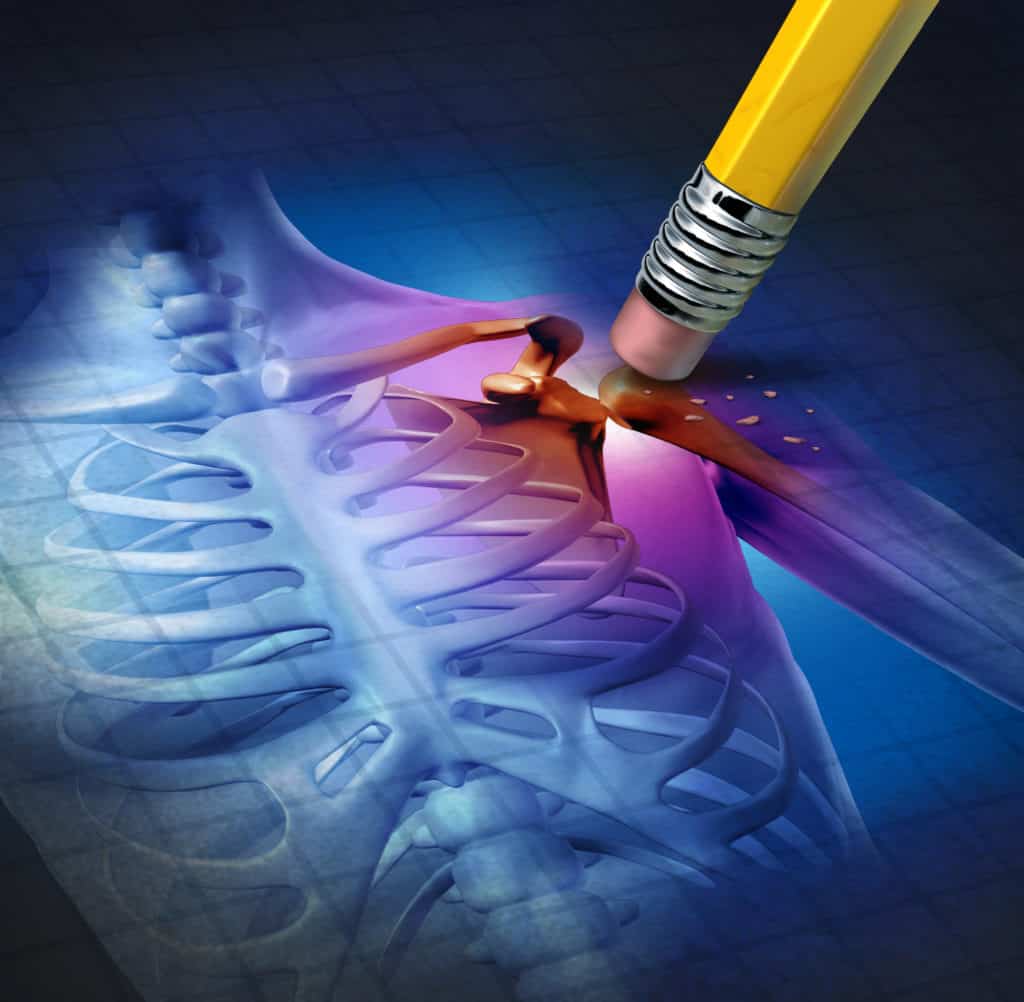Have you been told by well-meaning friends or relatives that you might have Myofascial Pain Syndrome? Perhaps you’ve been searching online and arrived at a Dr Google diagnosis of Myofascial Pain Syndrome. Still, you’re not sure what it is or whether your symptoms 100% fit the criteria. You have questions. What is going on?
We’ve all been there.
Are you worried by the negative outlook given about Myofascial Pain Syndrome in articles and medical reference sites?
If that’s the case, this article should interest you and maybe even shock you a little. But most importantly – we hope it makes you feel optimistic and assures you that you don’t have to endure the symptoms for the rest of your life. There is help at hand and your quality of life doesn’t need to suffer.
As Myofascial Release Therapists, we help people suffering from chronic pain to reclaim their bodies and enjoy full, active lives again. We’re used to treating patients with Myofascial Pain Syndrome. Especially those who have been told it is something they will have to live with. That the best they can hope for is to manage the pain.
We love seeing that change. And have a unique approach to doing much more than helping manage myofascial pain.
We’re not afraid to stand alone in the pursuit of better healthcare.
Read on to find out how you can beat Myofascial Pain Syndrome with a little help from the experts.
What Is Myofascial Pain Syndrome?

Google Medical Results and The Mayo Clinic describe Myofascial Pain Syndrome as:
“A chronic muscular pain disorder. Myofascial pain syndrome is a disorder in which pressure on sensitive points in the muscles causes pain in seemingly unrelated body parts. The syndrome often happens after repeated injury or muscle overuse. Symptoms include persistent pain or a tender muscle knot. Treatments include physical therapy, medications to relieve pain, local needling or injections, and relaxation techniques.”
We think you’ll agree; it’s pretty vague. There is also – within traditional Western Medicine – no widely-known treatment that can fully resolve this syndrome. A bucket full of pills and painkillers is their only option. We wholeheartedly disagree with this form of treatment – especially as they aren’t a cure because they all come with side effects and long-term health consequences, but more on that later.
If you suspect – or friends have suggested – that you might have Myofascial Pain Syndrome. You’re probably suffering from a whole host of uncomfortable symptoms, which are usually different for everyone. But most likely, they include:
- Inexplicable joint pain and stiffness – all over your body
- Tight, sore muscles – even though you’re too tired to go near a gym
- Crushing tiredness and fatigue – that nobody really understands
- Insomnia/poor sleep – you wake up feeling hungover most mornings
- Headaches – like, all day every day
- Muscle “knots” – tender areas that hurt when pressed
It can be helpful to have a diagnosis for what is going on in your body. It often gives a direction to research. And a deep dive into what myofascial pain is may be exactly what got you here.
However, it is important to note that having a label, especially one like myofascial pain syndrome, that leaves you feeling like you can’t be helped or cured often becomes a deep-rooted, self-fulfilling philosophy – leading to more muscle tension and, ultimately, more pain. Calling it a syndrome can easily lead into a Catch 22 situation, where nothing changes and life grows darker.
Some of the frequent symptoms associated with Myofascial Release Syndrome are common in fibromyalgia, chronic fatigue, and adrenal fatigue. I believe that all these conditions are a set of alert symptoms. They’re not standalone “syndromes” with no hope for a cure or a let-up in the symptoms. The outlook for these conditions, with the proper support, is nowhere near as bleak as general medicine Doctors lead you to believe. People can and do get better.
Sadly, once Western Medicine diagnoses these conditions, there is very little treatment. They offer patients anti-depressant medication or painkillers, but they only mask the symptoms. They don’t solve or address the root cause. Patients are supposed to accept the diagnosis and try and get on with their lives. Yet, when your body hurts all the time, and you have no energy for socializing or activities, life can become miserable.
It can feel incredibly frustrating and discouraging to meet with medical professionals and try to “prove” you are experiencing what you are experiencing. To be treated as if you are making it up.
It can feel incredibly frustrating and discouraging to meet with medical professionals and go through all the testing and be told nothing is wrong. Even when you know there is.
It can feel incredibly frustrating and discouraging to meet with medical professionals, sometimes over the course of several months or even years, only to have them diagnose Myofascial Pain Syndrome and tell you there is nothing that can be done.
We disagree with this process. And hope it will one day be different. We know your symptoms are real. It’s not “all in your head”. You do feel intense pain and suffer from all-consuming fatigue that makes it difficult to climb the stairs and many other symptoms.
The outlook, however, and the cause are pretty different from what doctors have told you before.
What Causes Myofascial Pain Syndrome?

The Western medicine view of what causes Myofascial Pain Syndrome is that they think it may result from a muscle injury, overuse, or inactivity. Again, their description of the cause is quite ambiguous, just like when they’re describing what the syndrome is. In our view, it’s only half the story as to why people end up with the collection of symptoms that they refer to as “Myofascial Pain Syndrome.”
Mistakenly, they also believe that the cause, for everyone, is the same.
We believe the root cause of myofascial pain is different for every single patient. In most cases, there’s a root cause. Then there are many other contributory factors stacked on top that build up over months, years, and sometimes decades.
Here’s how it usually happens…
Step #1. It begins with a shoulder injury – caused by an impact.
Step #2. Your body heals, but scar tissue forms and the fascia around it tightens.
Step #3. Further stresses of life and your body’s self-protection system – as a reaction to the impact, cause a holding pattern of tension that exacerbates everything.
Step #4. You lose muscle tenacity: power, mobility, endurance, and flexibility.
Step #5. A cascade of dominoes starts to fall as the resulting tight fascia begins to shorten and tighten other muscles in the body and reduce your mobility
Step #6. Hello, big hot mess and a body-wide straitjacket of pain, stiffness, and inflammation that you can’t shake off – aka Myofascial Pain Syndrome.
But what you choose to name this big hot mess of pain and inflammation is almost inconsequential. And, as we mentioned earlier, naming it can be damaging. The name doesn’t matter. What matters is finding the initial injury, illness, or other sources of inflammation. Then we work to rectify the resulting dysfunctions in your movement and holding patterns, shortened fascia, and potentially poor emotional state – to release you from the burden of chronic pain.
This methodology of finding the root cause and moving forward from there is always where we focus our attention on patients diagnosed with Myofascial Pain Syndrome.
How To Get Relief From Myofascial Pain Syndrome

If you’re suffering from the symptoms of Myofascial Pain Syndrome – like joint pain and stiffness and tight, sore muscles, with or without fatigue and no apparent cause – there are options available to you to treat the symptoms. And hope for healing.
Our #1 recommendation for patients suffering from any of the commonly diagnosed pain syndromes – like Myofascial Pain Syndrome, Chronic Fatigue Syndrome, and Fibromyalgia – is to come and see us in the clinic. We have vast experience in treating patients with these conditions. We help you discover the root cause of why you’re feeling so unwell and have been for so many years. A day lots of our patients never thought would arrive – before they came to see us.
At Release Works, we practice Myofascial Release Therapy. This effective treatment is a targeted form of hands-on therapy. Practitioners use gentle pressure to loosen stiffened and restricted tissues, free up impinged nerves and spinal discs, and support your body to repair and heal. This type of therapy, invented by Physical Therapist John F Barnes over 50 years ago – is on the leading edge of holistic healthcare, and in our opinion, the future of medicine.
The many benefits of Myofascial Release Therapy include better mobility and muscle strength, relaxation and improved sleep, and a greater sense of wellbeing.
Want to feel good again?
We have two options for new patients to get a feel for our service before committing to treatment: a Free Telephone Consultation or a Free In-Person Discovery Visit. The choice is yours. But both options offer you the chance to talk to a Myofascial Release Therapist and Chronic Pain Expert. Either on the phone or at our Utah clinic; Tell us your symptoms, and we’ll explain how we can help.
Not ready to book a call? Download our Free Report to find out “Who Myofascial Release Therapy Is For And What It Can Do For You” here.

